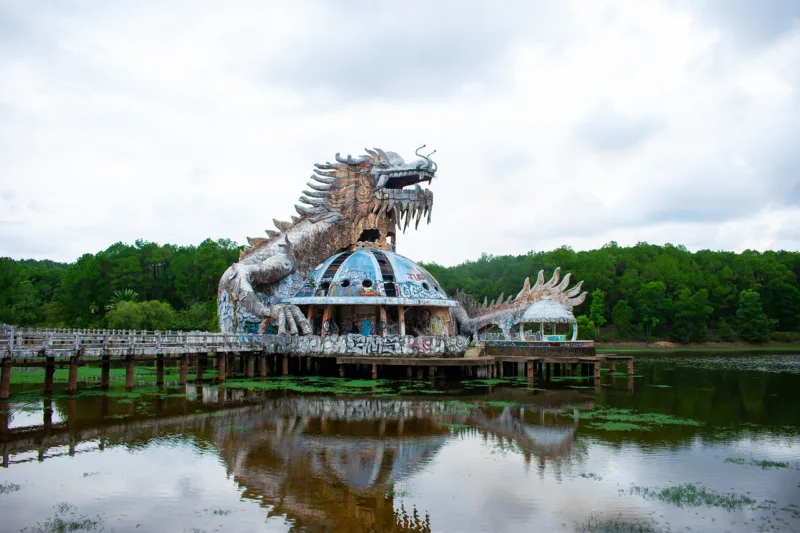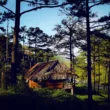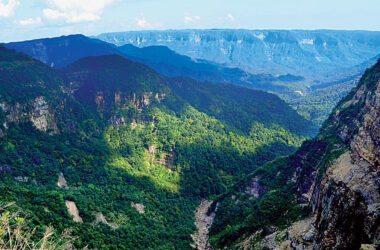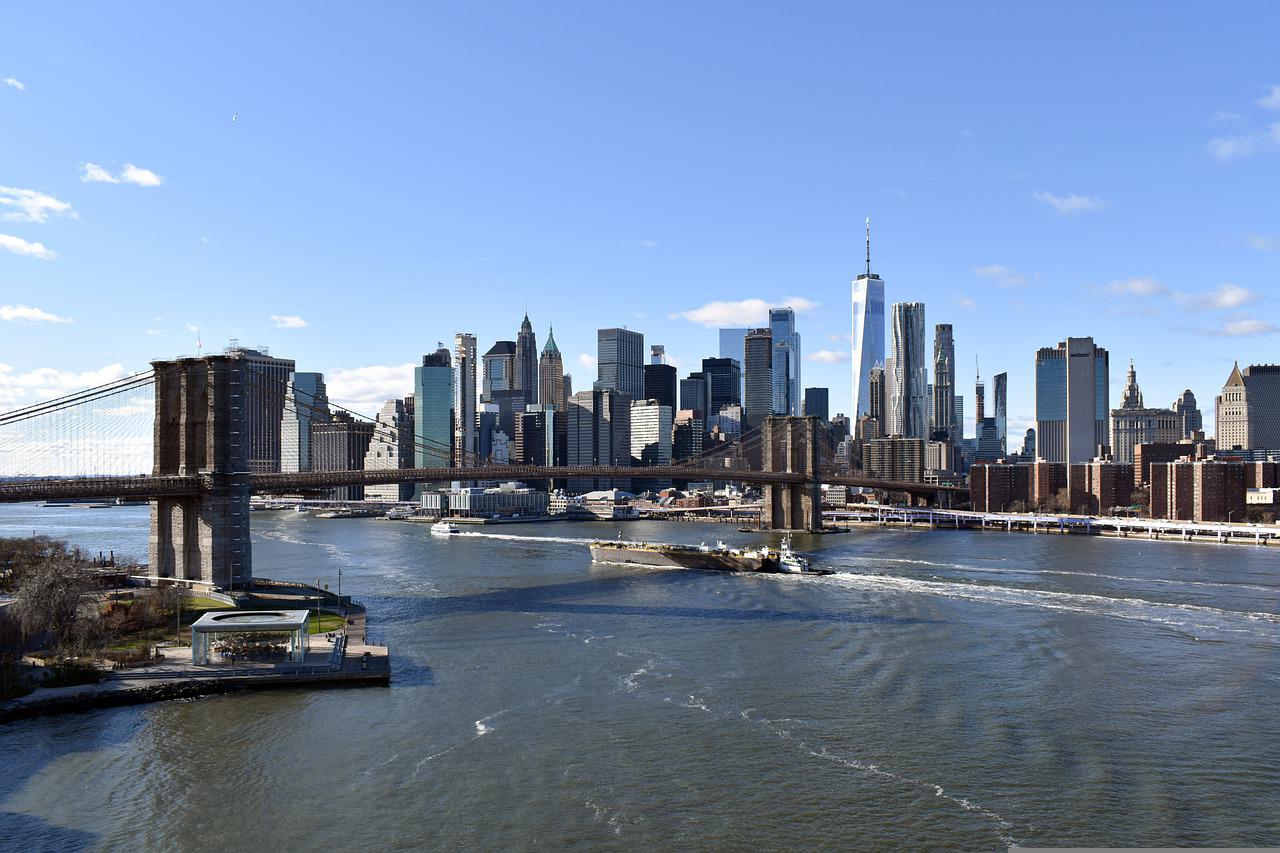Hue Vietnam: In the heart of Hue, the Imperial City stands as a testament to Vietnam’s rich history. This UNESCO World Heritage site, once the capital of the Nguyen Dynasty, is a sprawling complex of palaces, temples, and walls. Furthermore, it’s a great place to immerse yourself in Vietnam’s past. So, make sure to take a guided tour for a deeper understanding of this fascinating site.
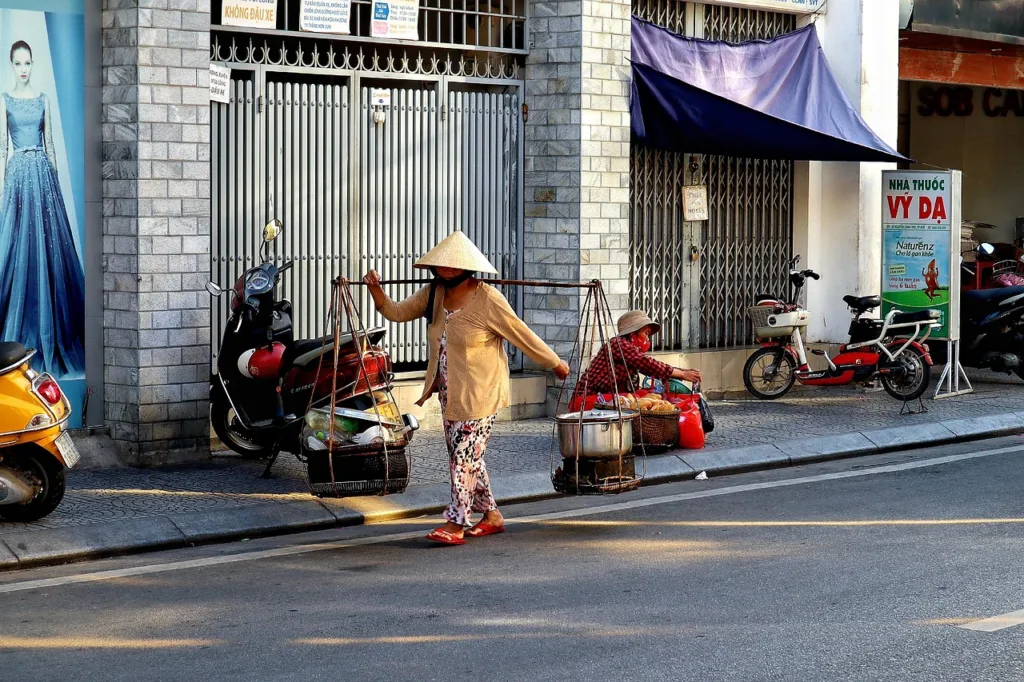
Cruise the Perfume River: A Scenic Journey
A cruise along the Perfume River offers a different perspective of Hue. As you float downstream, you’ll pass by pagodas, tombs, and local villages. Additionally, the river gets its name from the flowers that fall into the water from the surrounding orchards. These flowers give the river a fragrant aroma, especially in the fall.
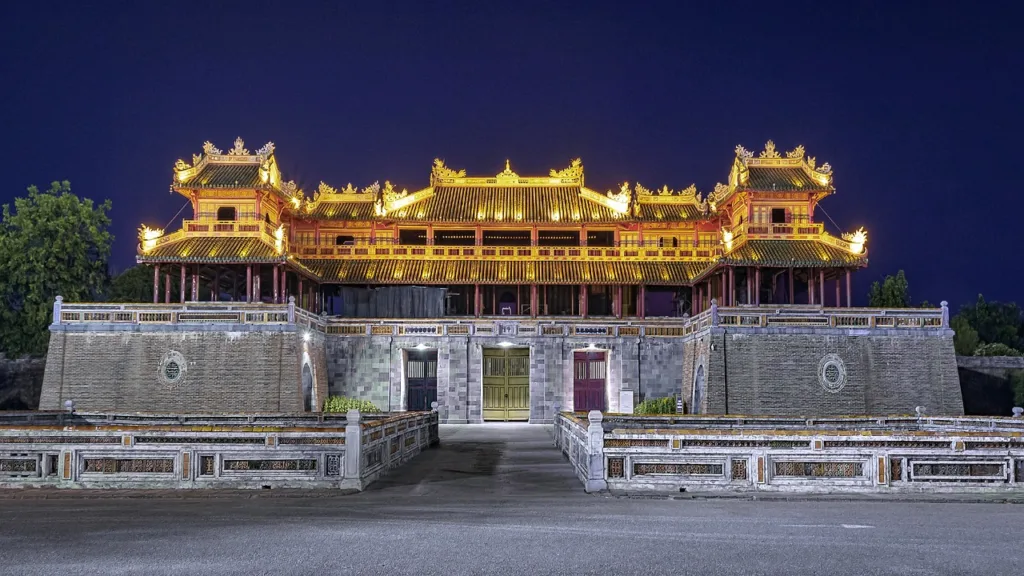
Visit the Royal Tombs: A Glimpse into Royalty
The royal tombs of Hue are elaborate mausoleums dedicated to the Nguyen emperors. Each tomb reflects the personality and preferences of the emperor it honors. Notably, the tomb of Emperor Tu Duc, set amidst a serene forest, is particularly impressive. Moreover, the tomb of Emperor Khai Dinh, with its mix of Vietnamese and European architectural styles, is also a must-visit.
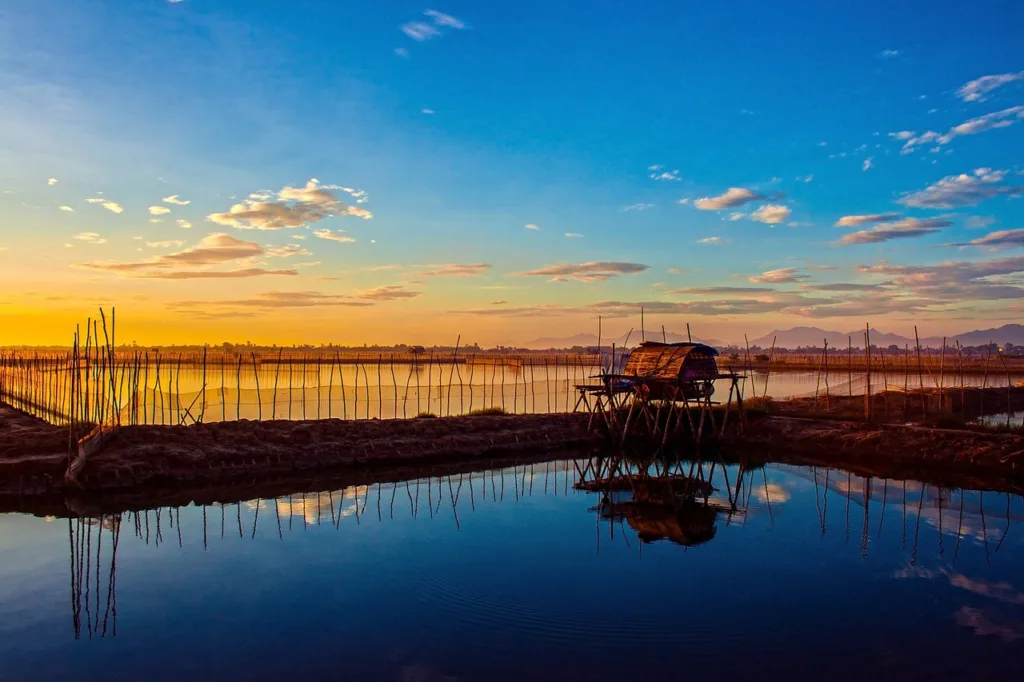
Explore the Thien Mu Pagoda: A Spiritual Experience
The Thien Mu Pagoda, also known as the Pagoda of the Celestial Lady, is one of Hue’s most iconic landmarks. This seven-story pagoda, overlooking the Perfume River, is a symbol of the city. In addition, it’s an active Buddhist monastery with a fascinating history. Be sure to take some time to explore its peaceful grounds and learn about its significance.
Enjoy the Local Cuisine: A Culinary Delight
Hue’s food is a reflection of its royal past, with dishes that are both flavorful and beautifully presented. Some must-try dishes include Bun Bo Hue (a spicy beef noodle soup), Banh Khoai (a crispy pancake), and Com Hen (a rice dish with clams). Also, don’t miss the opportunity to try some of the city’s famous sweet treats, such as Che Hem (a dessert soup).
Shopping in Hue: A Shopper’s Paradise
For those who love to shop, Hue offers a wide range of options. From bustling markets to high-end boutiques, there’s something for everyone. Be sure to visit the Dong Ba Market, where you can find everything from fresh produce to traditional handicrafts. Additionally, the city’s numerous art galleries and souvenir shops are great places to find unique, locally-made items.
Wrap-Up: A Journey to Remember
In conclusion, Hue, Vietnam, is a city that offers a rich tapestry of history, culture, and natural beauty. Whether you’re interested in exploring ancient ruins, cruising down a scenic river, or indulging in delicious food, Hue has something for everyone. So, don’t miss the opportunity to experience all that this charming city has to offer on your next trip to Vietnam.
Similar Articles
- Da Nang: A Coastal Paradise in Vietnam
- Phong Nha-Ke Bang National Park
- Nha Trang: Vietnam’s Premier Beach Destination and Cultural Hub
Frequently Asked Questions (FAQs) About Hue, Vietnam
1. What is Hue known for?
Hue is known for its rich history as the former capital of the Nguyen Dynasty and its UNESCO World Heritage-listed Imperial City. The city is also famous for its picturesque Perfume River and the royal tombs of the Nguyen emperors.
2. How do I get to Hue?
Hue, Vietnam is accessible by air, train, and bus. Phu Bai International Airport is located approximately 15 kilometers from the city center. Additionally, there are regular train and bus services from major cities like Hanoi, Da Nang, and Ho Chi Minh City.
3. What is the best time to visit Hue?
The best time to visit Hue is during the dry season, which runs from January to August. During this time, the weather is generally pleasant and suitable for outdoor activities.
4. What are some must-visit attractions in Hue?
Some must-visit attractions in Hue include the Imperial City, the Perfume River, the royal tombs of the Nguyen emperors, and the Thien Mu Pagoda. Additionally, don’t miss the opportunity to try local dishes like Bun Bo Hue and Banh Khoai.
5. How long should I stay in Hue?
A stay of 2-3 days is generally sufficient to explore the main attractions of Hue. However, if you have more time, you can also take day trips to the surrounding countryside or visit the nearby Bach Ma National Park.
6. Is Hue safe for tourists?
Yes, Hue is generally safe for tourists. However, like any other travel destination, it’s important to take common-sense precautions, such as keeping an eye on your belongings and being aware of your surroundings.
7. Can I get around Hue easily?
Yes, getting around Hue is relatively easy. The city is compact, and many attractions are within walking distance of each other. Additionally, there are plenty of taxis, cyclos, and motorbike rentals available for getting around.
8. What should I wear when visiting Hue?
Lightweight, comfortable clothing is recommended for exploring Hue, especially during the hot and humid months. If you plan to visit temples or pagodas, it’s a good idea to dress modestly, covering your shoulders and knees.
9. What souvenirs can I buy in Hue?
Hue is known for its traditional handicrafts, including silk paintings, lacquerware, and conical hats. Additionally, the city’s markets and souvenir shops offer a wide range of local products, such as tea, coffee, spices, and textiles.
10. Can I find vegetarian food in Hue?
Yes, Hue has a variety of vegetarian and vegan options, thanks to its strong Buddhist influence. Many restaurants offer vegetarian versions of traditional dishes, and there are also several dedicated vegetarian and vegan restaurants in the city.




